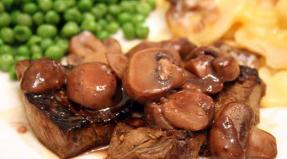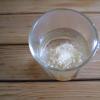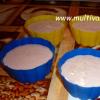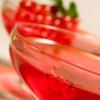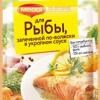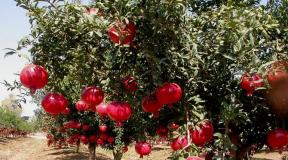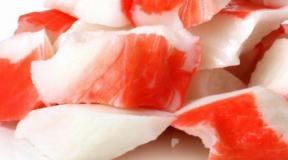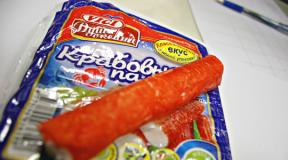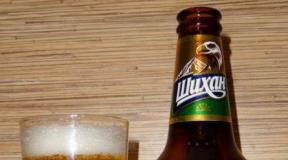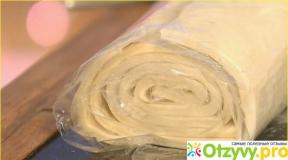Rum from the Canary Islands. What do they eat in the Canary Islands? Canary dishes worth trying
Is a volcano, i.e. the soil here is shallow and rich in minerals. Therefore, absolutely everything that has grown in the Canary Islands is mineral food. I am sure many of you regularly use mineral water. The effect of Canary products on your body is similar. Therefore, the Canary Islands have a very high average life expectancy. Canaries just forced eating healthy foods all the time. However, they can not only be envied, but also join this diet. Tourists are very welcome here, and they are well fed.
The most popular product growing in Tenerife is the banana. Banana farms fill a large part of the island. However, it is almost impossible to find a Canarian banana in Russia. Canary bananas are eaten almost without a trace by the inhabitants and guests of the archipelago.

They even, unlike their counterparts of non-Canary origin, have their own name - plane tree. For uniform ripening of the crop, some bunches are temporarily closed in opaque bags.

The next most popular product is tomatoes. There are many varieties, tastes and colors of them.

But the brightness of the taste is a distinctive "elite" feature of Canarian origin. In my own rating, the winners are medium-sized red-green tomatoes (that's right!). Once in your mouth, they explode all your taste buds. They are both sour and sweet, juicy, aromatic ... Even if I write a hundred characteristics, you will not know what they are. A must try!

Then comes the vegetable "visiting card" Canar - potatoes! Almost all Russians still remember how to grow potatoes on their personal plot.

Therefore, when they are served small wrinkled potatoes covered with salt in a restaurant in Tenerife, they are disappointed. But as soon as you try the dish, you will understand that these potatoes are "Canary"! Let me tell you a little secret, do not try to cook Canarian potatoes upon your return to Russia. Will not work. And the secret lies in the volcano, i.e. in Canary minerals.

For almost every meal, the Canaries prepare mojo sauces. The sauce is based on a mixture of local spices, diluted with olive oil, with the possible addition of sour cream or yoghurt. Of course, every cook has his own sauce. Local supermarkets usually sell 2-3 types of "mojo", both ready-made sauces and seasonings, and they are divided by color: red, green, and orange.

Of course, Canarians, both professional farmers and simply lovers of healthy food, grow many mineral vegetables and fruits. They can always be purchased in small local shops - Fruterii.

In addition, each district center has an agricultural market, often open a couple of days a week. This is where fresh volcanic mineral products are sold. Do not be embarrassed if the price is not very, or not at all more profitable than in the supermarket - it is certainly more useful here.

Another legend of the Canary Islands is Malvasia wine. The names of these liqueur wines (due to the high concentration of sugar, the strength can reach 18%) comes from the name of the aromatic grape variety - Malvasia.

In principle, this is a standard dry wine produced by the classical method (in addition to Malvasia, many more grape varieties are grown here). But since at the heart of each island of the Canary archipelago is a volcano mountain (grapes grow here at an altitude of 400 to 1700 meters), then on each island there are many climatic zones, and a varied mineral composition of the soil.

Of course, Tenerife is the very first here, because the Teide volcano is the largest and highest.

The final picture of the growing areas of controlled by origin (Denominacion de Origen - D.O.) grapes in the Canary Islands is as follows: Tenerife 5 regions (Abona, Icod, Guimar, Orotava, Tacoronte).





And one each Gran Canaria, Lanzarote, La Palma, La Gomera and El Hierro.

It should be noted that the cost of a bottle of Canarian wine in comparison with the range of supermarkets is considerable. But for sure you can't buy a good bottle of Malvasia for less than five euros. Naturally, they can simply give it to you, but never sell it cheaper.

In the Middle Ages, the Canary Islands produced wine for all of Europe. The British, who control the bulk of trade contracts, tried to lower purchase prices, but the Canary winemakers with demonstrative stubbornness poured wine on the ground.

Then, with the outbreak of political conflicts between England and Spain, and the imposition of an embargo on Spanish wines, the number of vineyards fell sharply. Further, in the recent past, most of the world's Malvasia vineyards perished in an unequal struggle with a specific and rapidly spreading pest. But the Canary Malvasia was saved thanks to its territorial autonomy.

Now, with the flourishing of global tourism, Canarian wines have a stable demand that is sufficient for the prosperity of winemaking. For example, there are more than a hundred bodegas in Tenerife (this is the name of a winery in Spanish), many of them do not pour wine in small bottles at all, but sell it either in bulk or in large old-fashioned bottles.

In addition to classic wine, there are other Canarian alcoholic drinks: Rum, Ron-miel (rum honey tincture),

banana vodka (tincture), palm liqueur, "dragon's blood" (with the addition of dragon tree sap), various flower wines produced by the "fermentation" method ... However, the locals prefer classic wines.

The next popular product is cheese. There are many cheese farmers on the islands. Very often, the production capacity is low, so it is impossible to buy a certain variety in the nearest store. Here again the "Canarian laziness" affects, well, they do not work for big money. There is enough for a carefree life, and enough. But you can work 2-3 days a week. After all, the Canary people live in the resort all year round. Who wants to get up one hour earlier at a resort to work twenty-five hours a day?

Therefore, I advise all fans of delicacies to regularly travel to various agricultural markets. So that fresh supplies do not stop for a carefree rest in the evenings on the terrace.

This concludes my short gastronomic report. Surely in the future I will cover the gastronomic topic in more detail.
Until next time friends. GOOD to you!
Z, S, Please do not hesitate to express your opinions in the comments. Ask any questions and I will be happy to answer them.
Z, S, Z, S, In addition, you can click on "likes" without holding back. Do you see the icons of various social networks next to it, do you have a page in one of them? If yes, then this is for you! For example, the owners of a page on the "classmates" network can click on the corresponding button and share the knowledge from this article with their friends on the "classmates". Through this simple action, your friends will learn more about the Canary Islands, then they will share with us what they still know about the "Archipelago of Eternal Spring", and we will eventually become Canary Encyclopedists. And knowledge is a powerful force that is always with you.
Z, S, Z, S, Z, S, In order not to miss the release of the next article, you can subscribe to the mailing of articles by mail - enter your address in the cell on the right and click "OK".
Gastronomic tourism, which has been developing so rapidly in recent years, covers all new regions and countries, and is becoming a favorite pastime for many travelers who prefer to discover new places to taste. Today we will tell you about a gastronomic tour to the Canary Islands, the cuisine of which is based on traditional Spanish recipes, slightly modified under the influence of a close geographical neighbor - Africa.
- a real paradise for connoisseurs of delicious and hearty food. Everyday Canarian cuisine is simple to perform that underlines the amazing quality of the local livestock, fisheries and agricultural products. As mentioned above, the gastronomy of the Canary Islands is characterized by the interpenetration of recipes from the Spanish Mediterranean, traditional Canarian and African cuisines. Thanks to the excellent ecology on the Canary Islands, developed agriculture, famous chefs of the world traditionally come here, including from Latin America, France, Italy, and of course, continental Spain. This is a popular destination for wine and food tours, because in the Canary Islands you can appreciate not only high-quality organic products, but also very good wine and rum.

So what is used in cooking in the Canary Islands? Firstly, the freshest fish, which abound in the local waters of the Atlantic Ocean, and secondly, seafood, as well as vegetables and exotic fruits. Particular attention is paid to meat. By the way, if you order yourself a meat dish in a restaurant, then everything will tell you about the cooked meat: from which region it was brought, what gender was the animal, how old, etc. Be sure to try the traditional Spanish ham, a delicacy made from dry-cured pork ham. It can be of different types, depending on the aging, breed of pigs. The most expensive jamon is from the Iberico pigs and can be recognized by its black hoof. Regardless of the type, jamon has a rather specific smell - "dirty socks", but the taste is simply amazing.
Fans of gastronomic tours to the Canary Islands know that in the generally recognized tourist places and lively resort towns, restaurant dishes are more European, but in small towns and villages you can taste real authentic dishes prepared according to centuries-old recipes that reflect the essence of the country and the islands. Now, let's talk about local products and dishes in more detail.
Let's start with an acquaintance with gofio - a universal product with which Canarians prepare soups, side dishes, and desserts. The taste of gofio, let's say for an amateur, but it is incredibly healthy. Gofio is a traditional food of the local population, which took root on the islands after the arrival of the Spaniards. It is a flour made from cereals that is served in various forms, including instead of bread. Milk or broth can be added to the flour and stirring until smooth, there is the resulting dough.
On a hot meal, locals love to serve the simplest dish of their cuisine - “Papas Arrugadas” - potatoes in their skins, like our “jacket potatoes”. The difference from the Russian dish is that the Canary people boil their potatoes in sea water, they do this until the water evaporates completely and the crystals of sea salt settle on the potato skins. Potatoes outside are covered with a beautiful salt crust and are moderately salty inside. The Canary people invented this dish out of despair: fresh water in the Canaries in ancient times was a rarity, and it was necessary to cook potatoes, therefore they used sea water, which was abundant. The result of cooking tubers in salted sea water surpassed all expectations, and this dish has forever entered the favorite dishes of the Canarian people. These potatoes are usually served with various local sauces. For example, with a spicy tomato sauce - "mojo piccon" or a spicy sauce with green herbs - "mojo verde". These sauces are sold only in the Canary Islands and are a great souvenir option for family and friends.

As for meat dishes, “Carne De Fiesta” is perfect for “Papas Arrugadas”, the literal translation is “Festive meat”, which is considered here pork, aged in a special marinade, and then fried on a wire rack. By the way, goat meat dishes are very popular on these islands. Cooking this type of meat is quite difficult, but local chefs are so successful that they are ready to offer travelers who have come on a gastronomic tour to the Canary Islands, many dishes with it. It is worth mentioning another incredibly popular meat dish “Conejo Al Salmorejo” - a stewed rabbit, pre-marinated in a special sauce “salmorejo”. Often in the Canary Islands, tourists are offered to try "Chuletas" - "cutlets", but these are not traditional Russian cutlets, but quite the opposite, a whole piece of meat, on the rib bone, rolled in spices and fried.
In the Canary Islands, you should definitely try the local seafood: shrimps, mussels, oysters, lobsters, octopuses, crabs - they are always amazingly tasty here, and naturally fresh, because the ocean is nearby. There are also many amazing fish dishes here. For example, a wonderful dish is fish with vegetables cooked in pots over an open fire. Moreover, it can be merlan fish, eel fry, sea pike fins. The name of a fish stew can vary as it depends on the name of the island where it was caught. Any tourist who has come to rest in the Canary Islands, and even more so on a gastronomic tour, is simply obliged to try the local dish "Toyos", which is prepared from shark meat. In almost every restaurant in the Canary Islands, you will be offered dishes from parrot fish, horse mackerel, black fish.
Let's move on to the desserts of the Canary Islands. I must say that they are all very tasty. Flan-pudding made from eggs and sugar is very popular here, as well as delicious sweetness with honey and nuts - "bienmesabe" and sweet baked milk - "leche asada". Almost all sweets here are usually eaten with palm honey - "miel de palmera", which is made on the island of Homera. A very popular dessert of the Canary Islands, which is even offered in hotels on a buffet - “Dulce de leche” is a creamy pasta that resembles our condensed milk. Is it worth talking about the variety of local fruits that go for dessert and are the basis of many dishes? For example, the already mentioned dessert “Flan” is made from fried bananas soaked in rum and poured with caramel. Do not forget to try the delicious Prince Albert chocolate mousse, with a lush sponge cake with almonds and hazelnuts. Almonds are the basis of many Canarian dessert dishes: Almendrado biscuits, sugar meringue, cheese dessert Torta de Cuajada, dry almond cake Keso de Almendra. In the Canary Islands, as well as in mainland Spain, a sweetness is popular - "turron" - a mixture of nuts in nougat.

Now information for fans of wine and beer tours to the Canary Islands. Canary wines have long been one of the best wines in the world, which have always been kept in the cellars of the rich in the Old and New Worlds, as well as at the royal courts. At one time, winemaking in these lands experienced a decline, but today everything is working out again, and amazing Canarian wines again declare themselves, becoming the best addition to the local cuisine. We recommend that you buy on the island - one of the largest islands of the Canary archipelago, excellent young wines, with the certificate of origin "Tacorone-Asentejo". In any good restaurant you can order wines from other Canary Islands, for example: white table wine from the island of El Hierro; red or rosé wine from La Palma; delicious Malvasia from Lanzarote. In small villages, wine tour lovers can taste excellent local wines. But the most popular drink not only in Canar, but also in mainland Spain is sangria. Sangria is a mixture of wine, water and a variety of fruits. It is served in glasses with ice for dinner, or simply drunk during the day to refresh a little.
Despite the fact that rum is most often associated with the Caribbean, Cuba, Jamaica, the Canary Islands have large sugarcane plantations that are necessary for the production of this drink. The local rum is very popular with the islanders and tourists due to its excellent taste and some medicinal properties. Travelers from cold countries, including Russia, often bring rum home as a gift to loved ones and for themselves, since this drink has warming properties and is quite pleasant to drink on cold winter evenings. Rum can contain different amounts of alcohol: from forty to eighty percent. It is often used as a base for cocktails or confectionery. Buy Ron con Miel honey tincture - Rum with honey, which is prepared only in the Canary Islands according to a unique secret formula.

Beer is a favorite drink of the Canary people, who are on par with the Germans in its consumption. Beer in the Canary Islands is pretty decent, and the technology of its production is closely monitored by specialists from Ireland and Bavaria.
If you are on the island of Lanzarote, go to the amazing restaurant - El Diablo Restaurante - the Devil's Restaurant, where you can see with your own eyes how the heat of the earth serves people: a hole nine meters deep was dug in the restaurant, on its surface there is a metal grill, which is used for grilling. Moreover, the temperature of such a grill is four hundred degrees. In the restaurant you can not only see an unusual way of cooking, but also taste amazing meat dishes prepared with the help of natural energy.
Gastronomic tours to the Canary Islands will introduce you to the original cuisine, allow you to plunge into the wonderful gastronomic world, where you will learn the technology of producing delicious local cheese, taste fresh organic fruits and vegetables, taste excellent wine and even learn how to cook some popular Canarian or Spanish dishes under the guidance experienced chef.
 |
 |
 |
 |
 |
 |
 |
 |
And also - a lot of cheap and good imported alcohol. Free economic zone after all. Quality Scotch whiskey, French cognac, English gin ... and all at extremely attractive prices. But, as the saying goes, "overseas a heifer is a half, and a ruble is transported." I mean, overweight luggage.
By the way, in the "dutik" of the southern airport the price tags for overseas bottles are about 20-30% higher than in the shops of the island.
“But only you, by God, have sipped too much Canarian wine, and this wine is extremely picky, and you won’t have time to ask:“ What’s wrong with me? ” - how it has already perfumed all your blood ”. These words belong to the pen of William Shakespeare.
Respected "nectar of the gods" and Robert Stevenson, Walter Scott, Lord Byron ...
After the fiasco of the promising sugar business (see below about rum), the industrious Canary people did not lose heart for a long time and they laid out vineyards on the site of the former cane plantations. And they did the right thing, because over the next many, many years, grapes became the main article of Canarian exports.
|
||||||||||
Canarian wines owe their popularity to the aforementioned malvasia(malvasia) - wine made from grapes of the same name. The grapes of this variety are used for the production of white (vino blanco), less often - red wine (vino tinto) and came to the Canary Islands from the Mediterranean.
For some reason it is believed that Malvasia is necessarily sweet wine. This is not true. There is indeed a very sweet malvasia, but another, even dry, is produced.
But nothing goes on forever. Due to the political situation, the export of noble wines to England and the British colonies came to naught. And with it the era of the famous Canary Malvasia ended.
Numerous foreign tourists, in their own way, also contribute to the popularization of Canarian wines outside Spain, taking home one or two bottles of their choice.
In Spain, vintage wines from certain wine regions bear the Denominacion de Origen (or DO) label on the label. This means that the wine is produced in accordance with the established standards for the area. Each region has its own "GOST" and regulates the entire production process: from growing grapes to marketing.
There are ten DO regions in the Canary Islands, half of which are in Tenerife. In total, more than 150 brands of wines are produced on the island, some of them in the amount of less than a thousand bottles a year. The once glorious Tenerife Malvasia now accounts for only a small part of the production.
|
||||||||||||
Even simple homemade wine (vino de la casa), which is kept in large glass bottles in country restaurants and served in jugs, is usually very decent. Such wines are always young and without preservatives, so they do not age, but oxidize over time, acquiring an unusual taste.
Wine tourism is becoming more and more popular among foreign tourists in Tenerife - acquaintance with Canarian winemakers and their products by visiting places of production.
Our compatriots traditionally limit themselves to wine tasting in the town of Icod de los Vinos. You can try different ones, remember the names of the ones you like and then buy them in the supermarket for one and a half times cheaper.
Interesting fact. The insidious phylloxera aphid, in the 19th century. ravaged vineyards throughout Europe, did not crawl to the Canary Islands. Therefore, many grape varieties have been preserved in the archipelago in their original form, which is appreciated by connoisseurs.
|
|||||||||||||||
 |
|
Lanzarote joined winemaking later than the rest of the islands, but it is here that the oldest surviving bodega on the archipelago is located - El grifo... We advise you to try the wine under this brand. There is no need to specially go for it in Lanzarote: it is also sold in Tenerife.
On the island of La Palma, unique red and rosé "wines de tea" (vino tea) are made, which are aged in Canarian pine barrels.
Rum
Sugarcane appeared in the Canary Islands in the middle of the 15th century, together with the conquistadors. The climate on the islands was favorable, and sugar was a hot commodity. Soon the cultivation of sugarcane became the main source of income for local peasants, and plantations in the archipelago grew like mushrooms after rain, displacing the pine forests.
The lack of a sufficient amount of our own raw materials is not a reason to abandon the distillation of such a wonderful drink. Rum (ron) was, is and will be in the Canary Islands. And not bad. True, today it is produced directly from the reeds grown here only on the island of La Palma (Ron Aldea brand). The rest, including the largest plant in the archipelago in the town of Arucas in Gran Canaria (brand Arehucas), work on imported molasses.
The best product of the Canary Romodels is Arehucas Captain Kidd rum, aged 20 years in a ceramic jug. About 90 € - and you have a very worthy souvenir.
|
|||||||||||||||||||||||||||
A special kind of Canarian rum - honey rum(it says ron miel on the label). More precisely, this is not rum as such, but a sweet drink with a strength of 20-30 ° in taste closer to liqueurs: a mixture of rum with honey. Apologists for "real" rum usually grin, but women like it.
Beer
Beer (cerveza) is loved in the Canary Islands. Only the attitude to the intoxicated drink is purely utilitarian: beer is beer, it is the same everywhere. Therefore, they drink what is cheaper.
 |
|||
|
|||
For a long time, these two producers fed tourists and locals on a territorial basis: in Tenerife and the western islands, mainly Dorada beer was sold, in Gran Canaria and the eastern islands - Tropical.
Then the breweries merged and were bought by the SABMiller group. Globalization, however. Despite the fact that both brands are now owned by the same owner, the geographical separation still exists.
The Dorada and Tropical product line includes several types of beer, including non-alcoholic (cerveza sin alcohol).
|
|||||||||||||||||||||||||||||
What about Canarian beer? Practically nothing. Nothing outstanding, rather mediocre. But you can drink. Moreover, when the surrounding resort environment is conducive to pacification and does not contribute to a critical perception of the world.
In 2000, another Canarian brewery appeared, producing beer under the brand name Reina oro... The plant was built in Tenerife in the town of Guimar. The emphasis was placed on the fact that only natural ingredients are used, without any chemical additives or preservatives. The market share of Reina Oro beer is small, and it does not taste different from other Canarian lagers.
Beer from the continent is also popular on the islands (meaning, of course, Spain), especially San Miguel.
By the way, it may well turn out that the restaurant you have chosen will only have one type of bottled or draft beer. Since the locals have no complaints about beer, they simply order it: "servesa". And who cares what they bring. The main thing is that it cools. banana liqueurs, willingly bought up for souvenirs. They are infused with local sweet bananas, so they can taste sugary.
There are honey, chocolate, coffee, mint, melon, apple liqueurs ... An interesting liqueur - Arehucas Bienmesabe from Gran Canaria.
In general, it is difficult to recommend this or that Canarian liqueur: as you know, all markers are different in taste and color. They are inexpensive, so it makes sense to go empirically. Even if the result upsets you, the process itself will leave pleasant memories.
|
Liqueurs include gomeron, a signature drink from Homer's island made from palm syrup and moonshine. They say it helps to increase male strength. True, it is possible that the Homer invented this story for their wives in order to get an indulgence for the consumption of this potion in unlimited quantities.
This means that alcohol and tobacco are sold here at no extra charge, practically for a pittance. In Tenerife, it will not be easy for a tourist who is not indifferent to strong drinks.
This place can be called amazing for at least two reasons. Firstly, there are authentic types of drinks that you cannot find anywhere else, and they are really good, and secondly, there is a lot of cheap imported alcohol of excellent quality. Of the nine hundred and eight and a half thousand inhabitants of the island, almost a third is Russian-speaking, but vodka and Russian beer are not sold here, and unlike mainland Spain there are no stores with nostalgic names like Troika or Matryoshka.
In second place in terms of quantity after "ours" are the British, Germans and Belgians. Getting a good quality English gin, assorted Scotch whiskey or German beer is no problem. There are very few French people in the Canary Islands, but excellent French cognacs are presented in abundance on the shelves. You will see a wide range of Spanish wines from the mainland at prices starting at € 1. Do not be alarmed, this is also drinkable.
Classification of Spanish wines by aging method

Malvasia and other wines are classified according to the aging method. It is customary among Spanish winemakers to produce and sell aged wine. There is a category of Hoven (Joven) - these are young wines with a minimum aging period of 1 year, usually not stored in barrels, but bottled immediately. Most of the farms are trying to make their wine even better, therefore, they strictly comply with even the minimum aging periods for wine, and, if possible, even exceed them.
The next category is Crianza. These wines have at least two years of aging, of which the wine spends six months in a barrel. This wine is always delicious thanks to the oak from which the barrels are made. White and rosé wines of this category are aged in barrels for at least a year.
Reserva and Gran Reserva are wines aged for three and five years, respectively. Red wines are aged in barrels for a shorter period than rosé and whites.
Rum

In the middle of the 15th century, Spanish conquistadors appeared on the island. After assessing the local climate, the first thing they created was sugarcane plantations. sugar was the most popular commodity at the time. Soon the cultivation of sugarcane became the main source of income for local peasants, and even pine forests began to displace plantations. Of course, sugar production is no longer the same as in the days of the slave trade, but the remaining plantations are carefully preserved, and rum production in the Canary Islands is widespread.
Rum is a constant companion in the production of sugar from cane. The basis of production is molasses, formed during the fermentation of the plant. It is pitch black and has its own name: molasses. Canarian rum is prized for its mild flavor and aroma, and its warming properties. The alcohol content in it is from 40 to 80%. The special pride and visiting card of the Canary Islands is honey rum (ron miel). In fact, this is a mixture of rum with honey and a small amount of palm juice, it is less strong, 20-30 degrees. Delicious drink especially popular with ladies.
By the way, it is impossible to get poisoned with alcohol in Tenerife: there are no fakes here, so any bottle with the inscription ron miel can be taken from the store.
Other things to try:
- The Aldea brand is a rum from the island of La Palma, the only one produced from cane grown there.
- Arehucas brand - rum from Gran Canaria, large production, working on imported molasses.
- The Cocal brand is Tenerife rum, the factory is located in La Laguna.
Liqueurs

Continuing the story about spirits, one cannot fail to mention the famous banana liqueur. This type of product is more aimed at tourists. As you travel around the island, you notice huge banana plantations, and of course, you will want to try banana liqueur.
The drink really does insist on local sweet bananas, so it tastes terribly cloying and its color is poisonous yellow. To top it off, banana liqueur is often sold in plastic bottles and is cheap. Don't be embarrassed: despite the strange appearance and packaging, this is a natural product. Try it, where else will you find this? Here again we advise you to choose the Arehucas brand from Gran Canaria. They also produce honey, chocolate, berry, coffee, mint, apple liqueurs - for every taste and color.
Beer


Spanish beer cannot be remembered without sadness, especially if you are an experienced traveler and have been to Bavaria, the Czech Republic or Brazil. However, as in any hot corner of the Earth, the Canary Islands also love cold foam.
The first brewery appeared in the archipelago in 1924 with the Tropical brand. Fifteen years later, Compania Cervecera de Canarias opened and the Dorada brand was born. Today they belong to the same owner. In Tenerife, Dorada beer prevails in the sale, in Gran Canaria and the eastern islands - Tropical. Canarians are very undemanding to the intoxicated drink, which is probably why unremarkable beer is produced here.
Relatively recently, in 2000, another Canarian brewery appeared, producing beer under the Reina Oro brand. This is a natural beer without preservatives, produced in Tenerife in Guimar, near the South Airport. It tastes slightly better than the first two. The fourth type is San Miguel, ubiquitous in Spain. The choice of beer in establishments is very modest, usually Dorado and San Miguel are bottled. Lovers and connoisseurs of a foamy drink should not despair. As mentioned above, due to the large number of expats from the United Kingdom, one in three bars on the island is an Irish pub with a good selection of beers.
In previous articles we have already talked about wines, but this is only a small part of what it makes sense to try while vacationing in the Canary Islands. I am in no way encouraging the reader to join alcoholism, but, in fairness, a little attention should be paid to other traditional drinks in the Canary Islands.
The Canary Islands have a special relationship with alcohol, only here you can buy authentic types of drinks that you will not find anywhere else!
Ron Miel honey rum
Traditional honey rum is the most popular alcoholic beverage in the Canary Islands. Honey rum (Ron Miel) very sweet and has a strength of 30o. We are talking about a mixture of rum and honey, although it tastes closer to liqueurs: honey rum is very soft and sweet. It is customary for local residents to drink rum with honey at the end of lunch or dinner. You can add it to coffee or ice cream. Also, there is a legend that rum was invented in the Canary Islands.
The largest rum factories are located in the town of Arucas in Gran Canaria (rum brand "Arehucas") and "Cocal" in Tenerife. Usually rum is aged in oak barrels from 3 to 10 years, and the most “elite” Canarian rum (“Captain Kidd”), aged 20 years, in ceramic jugs.
Banana liqueur
 Arehucas Banana Liqueur from Gran Canaria
Arehucas Banana Liqueur from Gran Canaria As you travel around the islands, you will surely notice a large number of banana plantations. Canary bananas are medium sized bananas that are distinguished by their taste and sweetness.
Banana liqueur on the islands is infused with local bananas. There are so many producers of the drink on the islands that it makes no sense to list all the names, since each of them is unique in its own way and is not at all expensive. Which one to prefer can be determined only after personal testing.
Wine in the Canary Islands

The Canary Islands is the only wine-growing region located in the Atlantic Ocean. Winemaking is most developed on the islands, Tenerife, Fuerteventura and Gran Canaria.
The best way to learn about the culture of wine is to visit the wineries of the islands. In each of them you can taste and buy local wine, and some even have their own museums.
List of 10 wines to come to the Canary Islands for 🙂
- Pink Bermejo 2010(Lanzarotte) is a dry wine with a fruity aroma.
- Monje tinto tradicional 2008 ( Tenerife, Tacoronte) - an incredibly balanced wine with aromas of wild berries and herbs.
- Bermejo espumoso brut nature(Lanzarote) is a dry, fresh, aromatic wine with a rich texture.
- Tajinaste tinto tradicional 2010(Tenerife) - fruity, with aromas of flowers and fruits.
- Bermejo malvasía seco 2010(Lanzarote) - great taste combined with fresh citrus aromas.
- Carballo listán blanco(La Palma) - very delicate floral aroma, amazing taste.
- Frontón de Oro tinto(Gran Canaria) - fresh and delicate, with aromas of red fruits and flowers.
- Bermejo malvasía dulce(Lanzarote) - very sweet, almost thick wine, with aromas of candied fruits and coconut.
- Tendal (La Palma)- aromas of flowers and herbs, dark saturated shade.
- Vid Sur tinto negramo(La Palma) - floral, with a scent of wild fruits.
Beer in the Canary Islands

The first brewery appeared in the archipelago in 1924 with the Tropical brand, and fifteen years later Compania Cervecera de Canarias opened and the Dorada brand was born. Today they belong to the same owner. Dorada beer is mainly sold in Tenerife, and Tropical beer in Gran Canaria and the eastern islands. Canarians do not have a big love for the intoxicated drink, which is probably why the beer is produced here, unremarkable.
The choice of beer in establishments is rather modest, but lovers and connoisseurs of the drink should not despair. Thanks to the large number of expats, every third bar on the island is an Irish pub with a good selection of beers 🙂


































